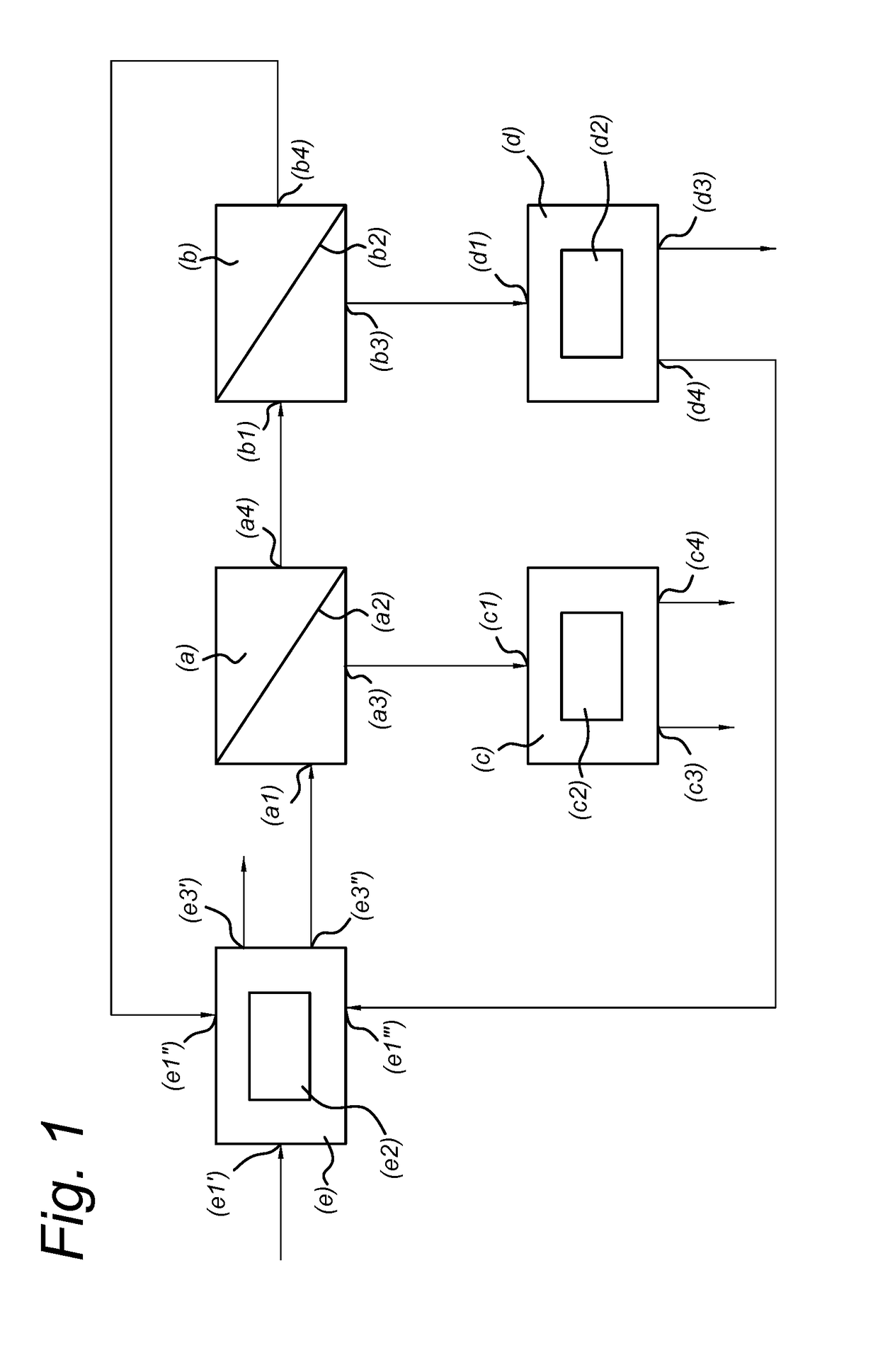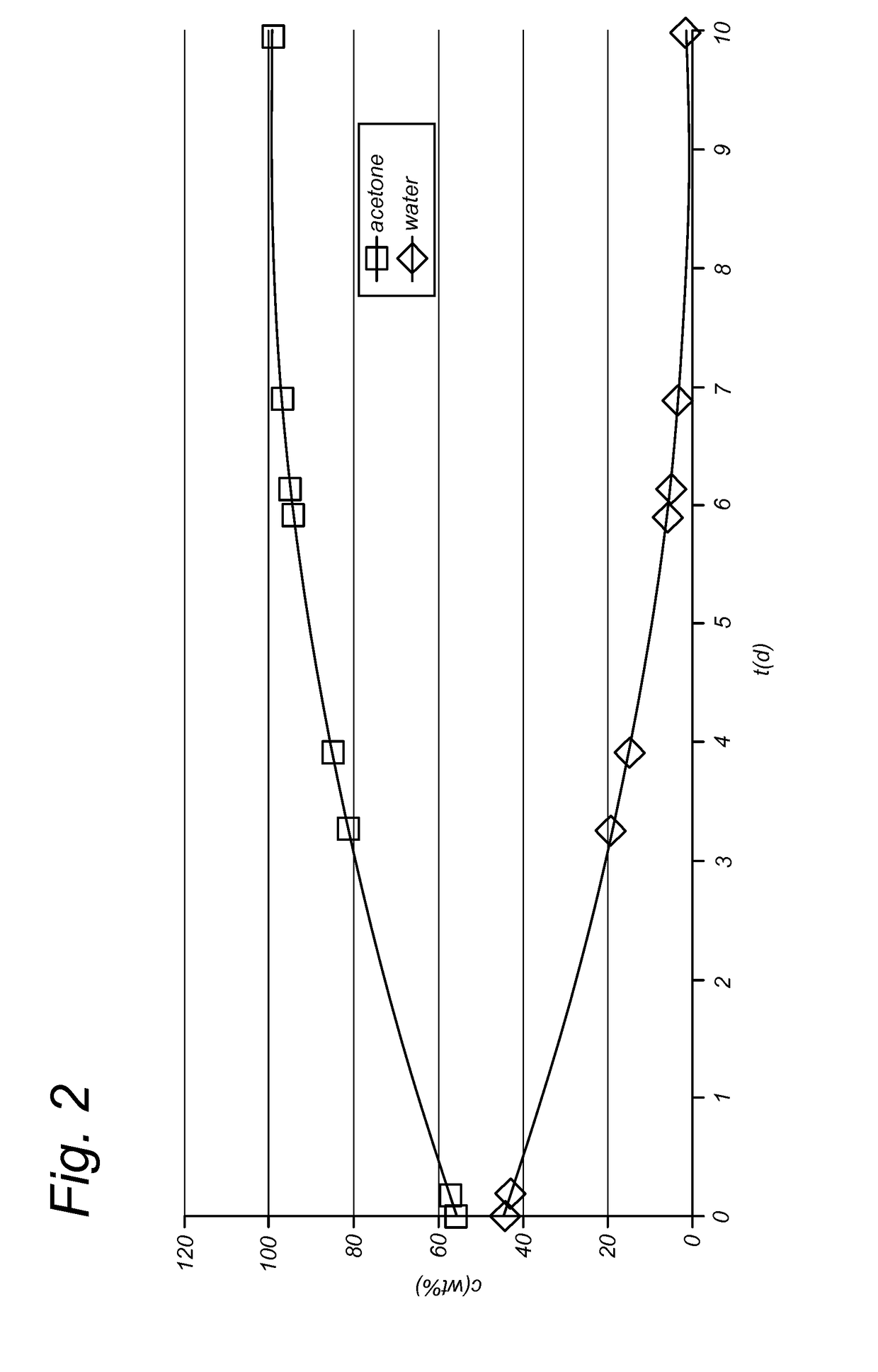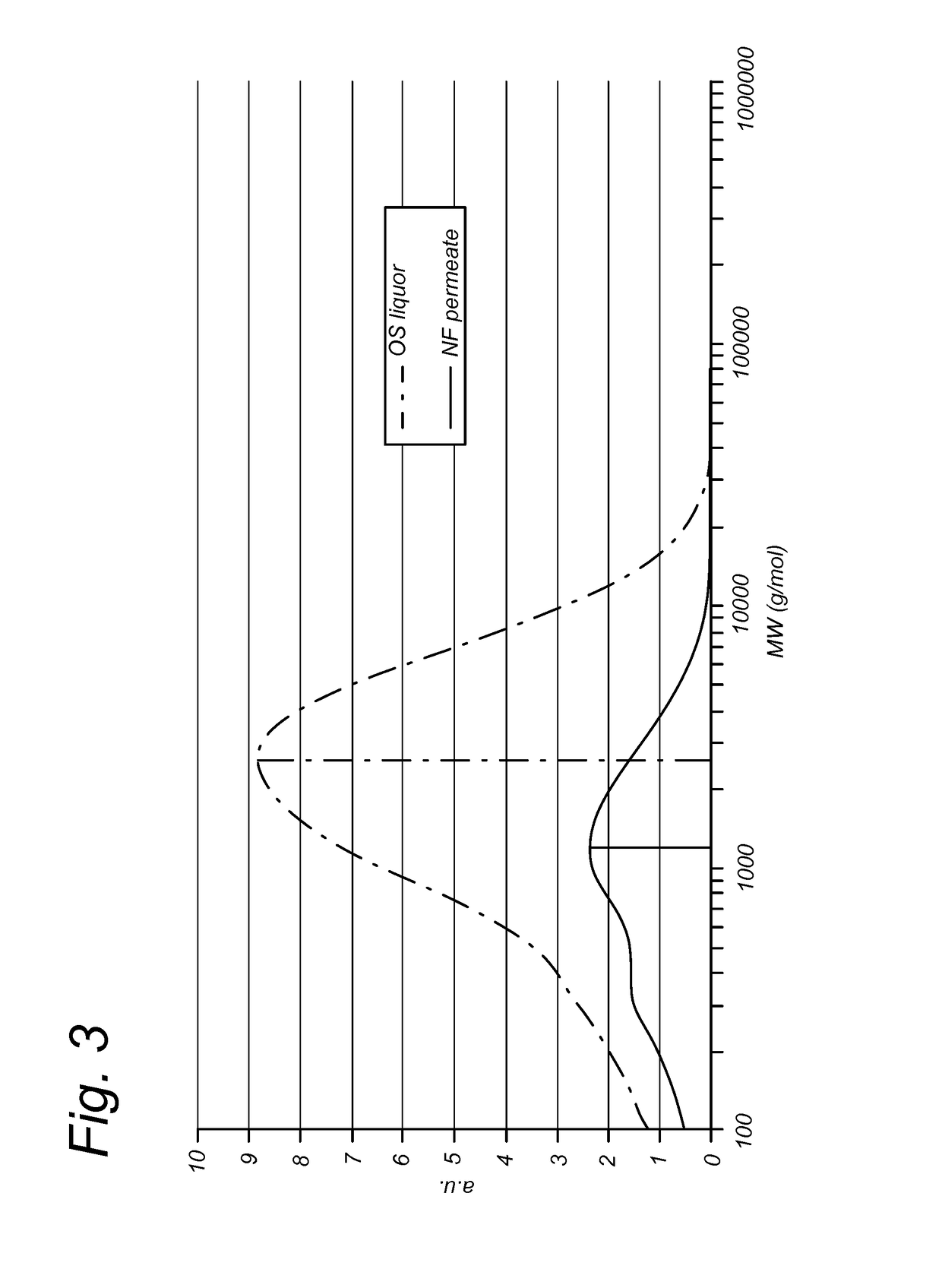Separation of lignin and sugars from biomass pre-treatment liquors
a technology of pre-treatment liquor and lignin, which is applied in the field of separation of lignin and sugars from biomass pre-treatment liquor, can solve the problems of energy-consuming and costly, sugars) extracted from large amounts of liquor by currently-available technology, and cellulose within lignocellulosic biomass is poorly accessible for hydrolytic enzymes
- Summary
- Abstract
- Description
- Claims
- Application Information
AI Technical Summary
Benefits of technology
Problems solved by technology
Method used
Image
Examples
example 1
y Test
[0072]The solubility of xylose (>99% pure, VWR) in different solvent systems, that are suitable to be used as treatment liquid during organosolv, is tested. Xylose was used as representative of all monomeric sugars, as it is the most abundant carbohydrate found in hemicellulose present in hardwoods and herbaceous biomass and thus in corresponding organosolv liquors. The indicated amount of xylose was added to each solvent system at 20° C. and the suspension was mechanically stirred for 24 h. Hereafter, the saturated solution containing remaining xylose was allowed to settle for 3 h and the liquid was removed. The residue was dried and the amount of undissolved xylose was determined. The results are displayed in table 2.
TABLE 2Xylose solubilityxylose addedxylose notsolvent system(wt %)[a]dissolved (wt %)[b]water / acetone 9.9 / 90.1 (w / w)2.380.2water / acetone 8.4 / 91.6 (w / w)2.079.1water / acetone 4.9 / 95.1 (w / w)2.793.0water / acetone 1.9 / 98.1 (w / w)2.799.1acetone (100%)2.799.1water / ethanol...
example 2
d Sugar Isolation from an Acetone Organosolv Liquor
[0074]An organosolv liquor obtained by subjecting biomass (wheat straw) to organosolv at 140° C. during 60 min using a solvent system of acetone / water 50 / 50 (w / w) (10 L / kg dry biomass) and 60 mM H2SO4. The liquor was subjected to nanofiltration at 60° C. over a sulfonated polyether ether ketone membrane on a ceramic support, having a molecular weight cut-off of 500 g / mol. Nanofiltration was performed with a VCF of 3 and a flux of 0.2 kg / m2·h·bar, which remained stable for at least 7 days. Upon nano filtration a retentate (NFR) and a permeate (NFP) were obtained.
[0075]The NFP was subjected to pervaporation at 58° C. using a hybrid silica tubular membrane (length 5.4 cm) consisting of a macroporous α-alumina support and a top layer prepared from bis(triethoxysilyl)ethane (BTESE) by sol-gel deposition as described in WO2007 / 081212. The liquor was placed in direct contact with one side of the membrane (the feed side), while the other si...
example 3
d Sugar Isolation from an Ethanol Organosolv Liquor
[0079]Step A: Nanofiltration separation
[0080]A nano filtration membrane was prepared by coating a boehmite sol with a coating velocity of 5 mm / s on a macroporous α-alumina tubular support. This layer was air-dried overnight and was exposed to a heat treatment of 200° C. for 1 hour. After cooling, the membrane was sealed by welding stainless steel caps with a carbon seal inside on the membrane. The membrane had a length of 48 cm and an outer diameter of 14 mm. The molecular weight cut-off of the membrane was 1700 g / mol. To characterize the membrane, first a retention test was executed by dissolving 1 wt % polyethyleneglycol (PEG 2000 gr / mol) in water and using a nano filtration cross flow set up operated at ˜20° C. with a feed flow of 1 m3 / h. During 38 days of operation, the flux was higher than 1.2 kg / h·m2·bar and the retention was >95%. Flux and retention were more or less constant over time.
[0081]An organosolv experiment was perfo...
PUM
| Property | Measurement | Unit |
|---|---|---|
| Temperature | aaaaa | aaaaa |
| Mass | aaaaa | aaaaa |
| Mass | aaaaa | aaaaa |
Abstract
Description
Claims
Application Information
 Login to View More
Login to View More - R&D
- Intellectual Property
- Life Sciences
- Materials
- Tech Scout
- Unparalleled Data Quality
- Higher Quality Content
- 60% Fewer Hallucinations
Browse by: Latest US Patents, China's latest patents, Technical Efficacy Thesaurus, Application Domain, Technology Topic, Popular Technical Reports.
© 2025 PatSnap. All rights reserved.Legal|Privacy policy|Modern Slavery Act Transparency Statement|Sitemap|About US| Contact US: help@patsnap.com



